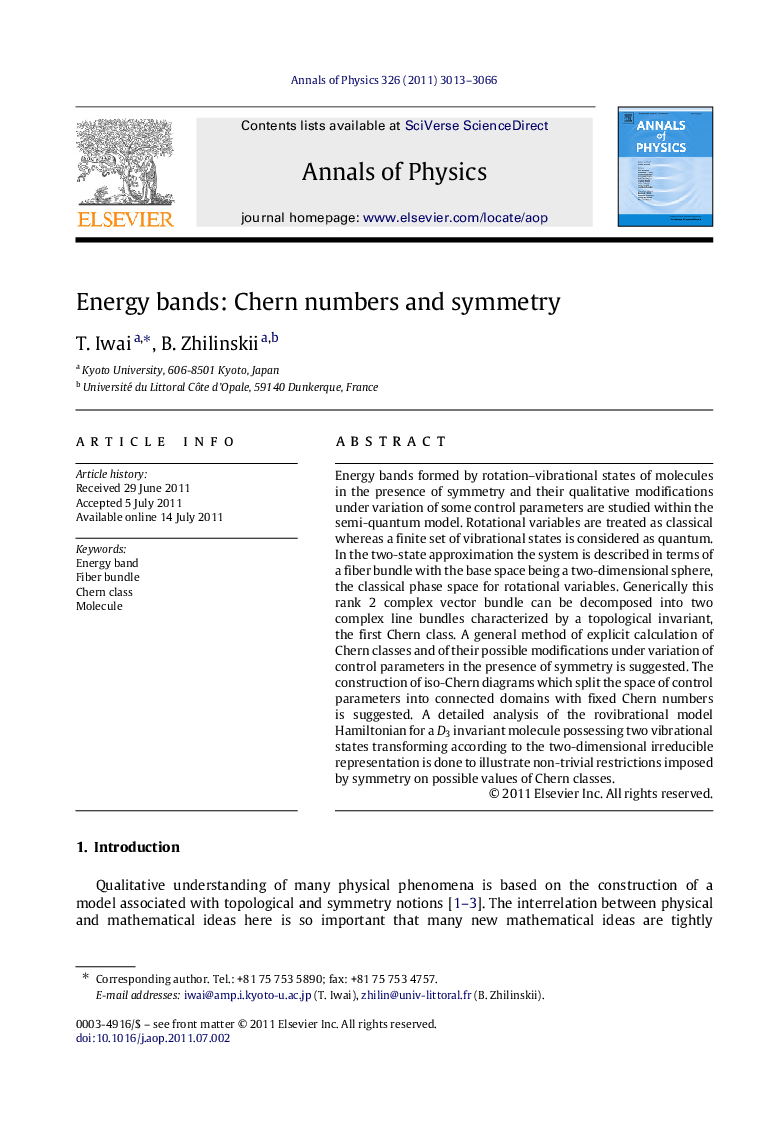| Article ID | Journal | Published Year | Pages | File Type |
|---|---|---|---|---|
| 1854851 | Annals of Physics | 2011 | 54 Pages |
Energy bands formed by rotation–vibrational states of molecules in the presence of symmetry and their qualitative modifications under variation of some control parameters are studied within the semi-quantum model. Rotational variables are treated as classical whereas a finite set of vibrational states is considered as quantum. In the two-state approximation the system is described in terms of a fiber bundle with the base space being a two-dimensional sphere, the classical phase space for rotational variables. Generically this rank 2 complex vector bundle can be decomposed into two complex line bundles characterized by a topological invariant, the first Chern class. A general method of explicit calculation of Chern classes and of their possible modifications under variation of control parameters in the presence of symmetry is suggested. The construction of iso-Chern diagrams which split the space of control parameters into connected domains with fixed Chern numbers is suggested. A detailed analysis of the rovibrational model Hamiltonian for a D3D3 invariant molecule possessing two vibrational states transforming according to the two-dimensional irreducible representation is done to illustrate non-trivial restrictions imposed by symmetry on possible values of Chern classes.
► Complex line bundles associated with eigenvalues of 2×2 Hermitian matrix Hamiltonians. ► Hamiltonians are defined on the 2-sphere and invariant under symmetry groups. ► Symmetry permits only some special integers as Chern numbers. ► For SO(2)SO(2) symmetry, the possible values are 0, ±K±K, where KK is an index of the representation. ► For D3D3 symmetry, the possible values are ±2, ±4 within our model Hamiltonians.
